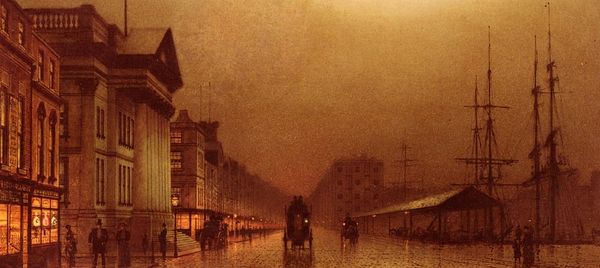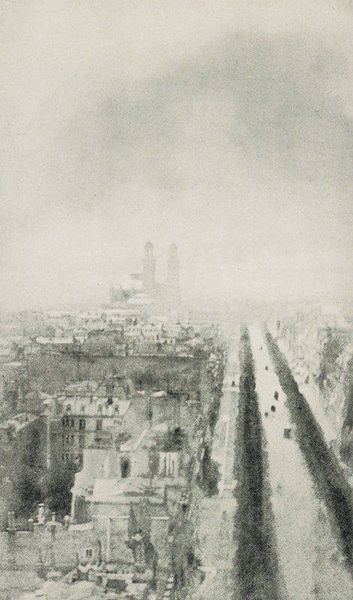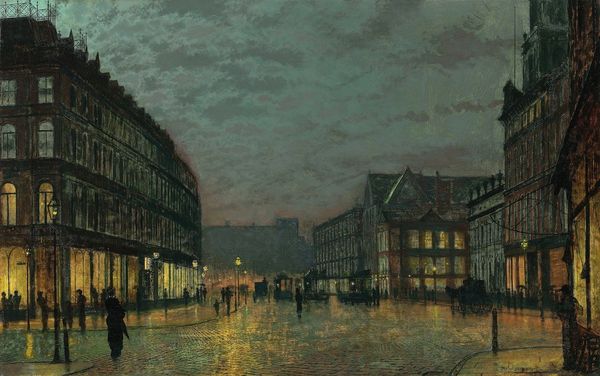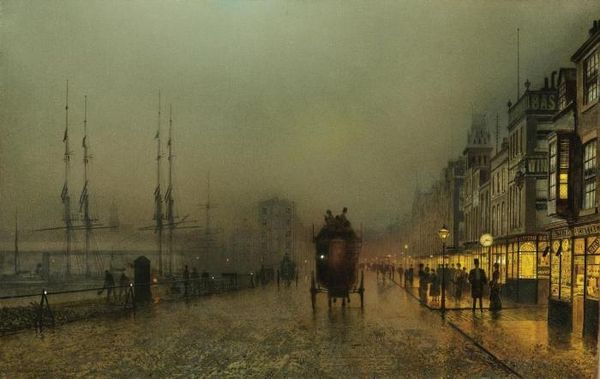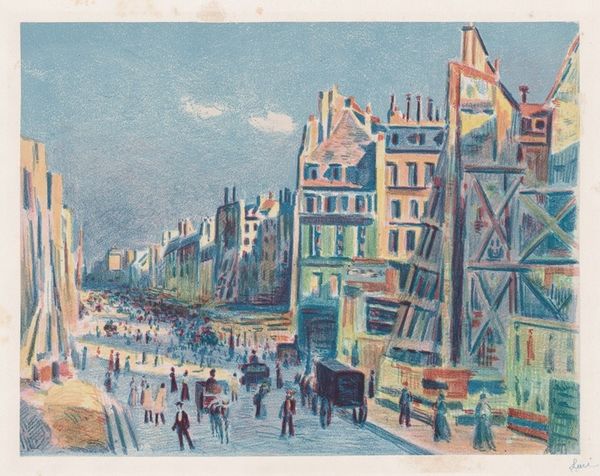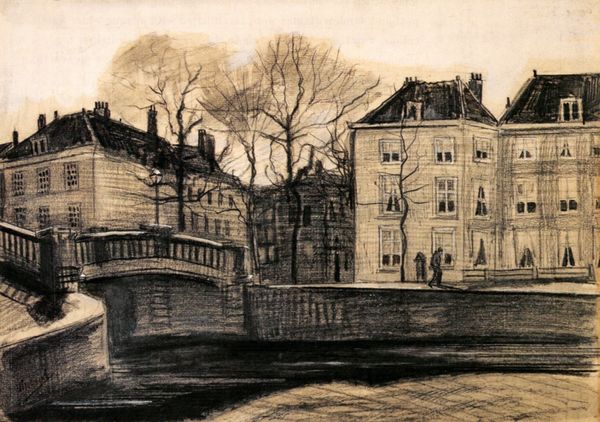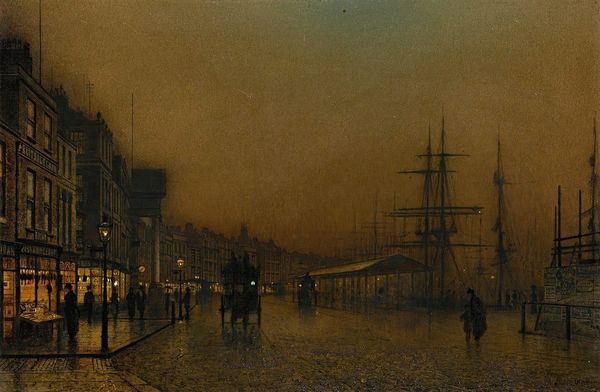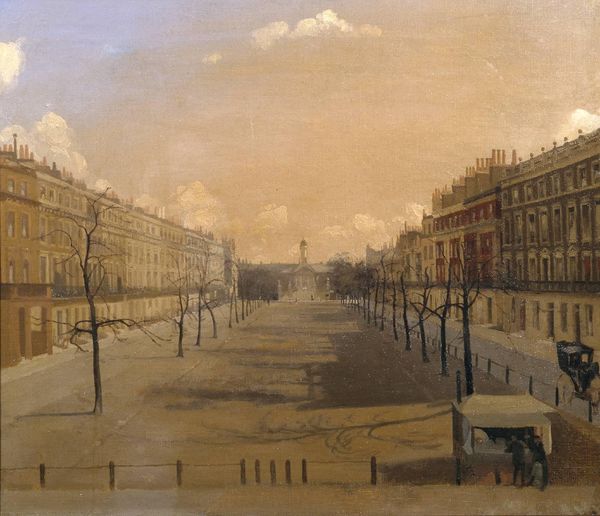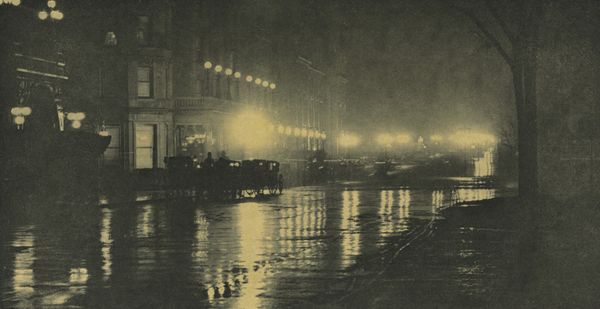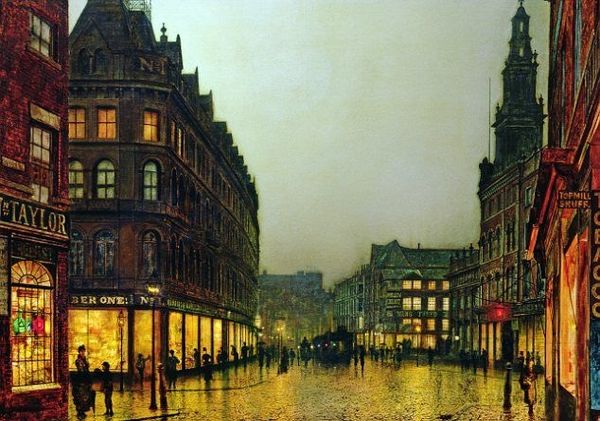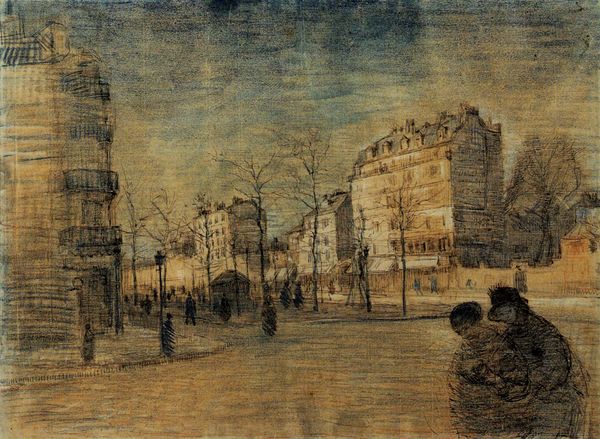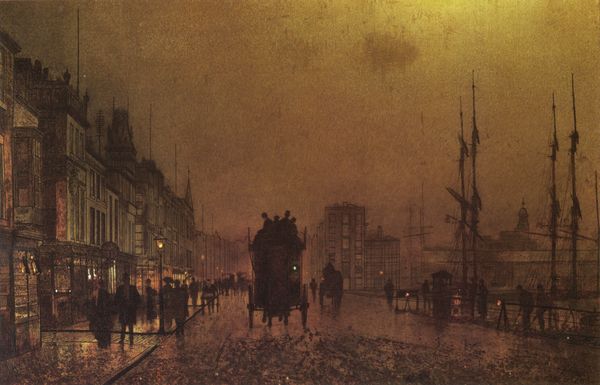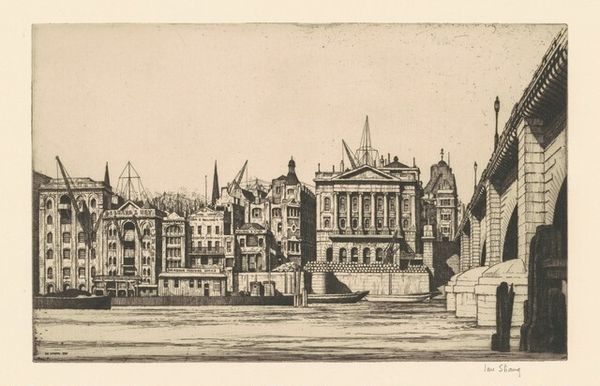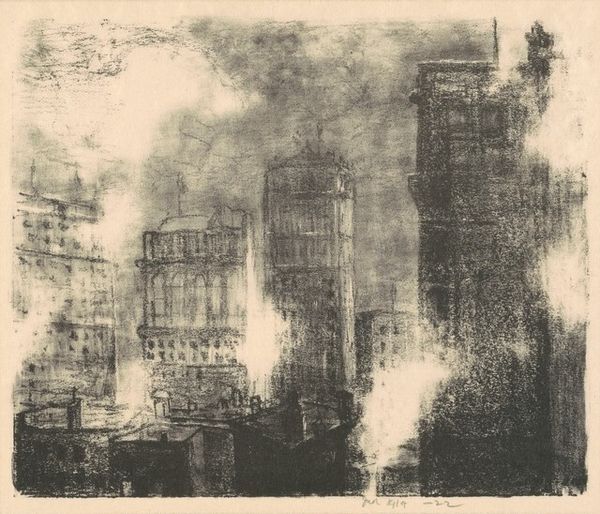
Copyright: Hiro Yamagata,Fair Use
Editor: So, this is "Rainy Day" by Hiro Yamagata, from 1986. It seems to be watercolor, and maybe some other media. The overall impression is... wistful, I guess? Like a memory. What do you see in this piece? Curator: I see a layered memory palace. Notice how Yamagata doesn’t just depict a rainy day, but a cultural artifact *of* a rainy day *in* Paris. It's bathed in a specific kind of nostalgic light. Editor: A cultural artifact? What do you mean? Curator: Look at the iconic architecture—the Eiffel Tower, the signage in French. But also the soft focus, the almost sepia tones. It's as if Yamagata is painting not just the city, but our collective memory of it, a Paris filtered through films and postcards. Notice the presence of the hot air balloons! They carry cultural, emotional and psychological connotations relating to freedom and technological advances, and are signs of the future. Editor: So it's like he's painting a *feeling* of Paris rather than just a picture of it. But I never knew balloons held that significance. Curator: Exactly. He uses recognizable imagery – the kind we’ve already seen a thousand times – to evoke a sense of familiarity, even for those who've never been there. Consider also how the rain itself acts as a veil, obscuring detail and further blurring the lines between reality and remembered experience. What feeling does that evoke in you? Editor: It definitely creates that feeling of a half-remembered dream, or a faded photograph. Almost like time is collapsing in on itself. I will never look at hot air balloons the same way again. Curator: And that's the power of visual symbols, isn't it? They accumulate layers of meaning over time, and artists like Yamagata use them to tap into our collective consciousness.
Comments
No comments
Be the first to comment and join the conversation on the ultimate creative platform.
